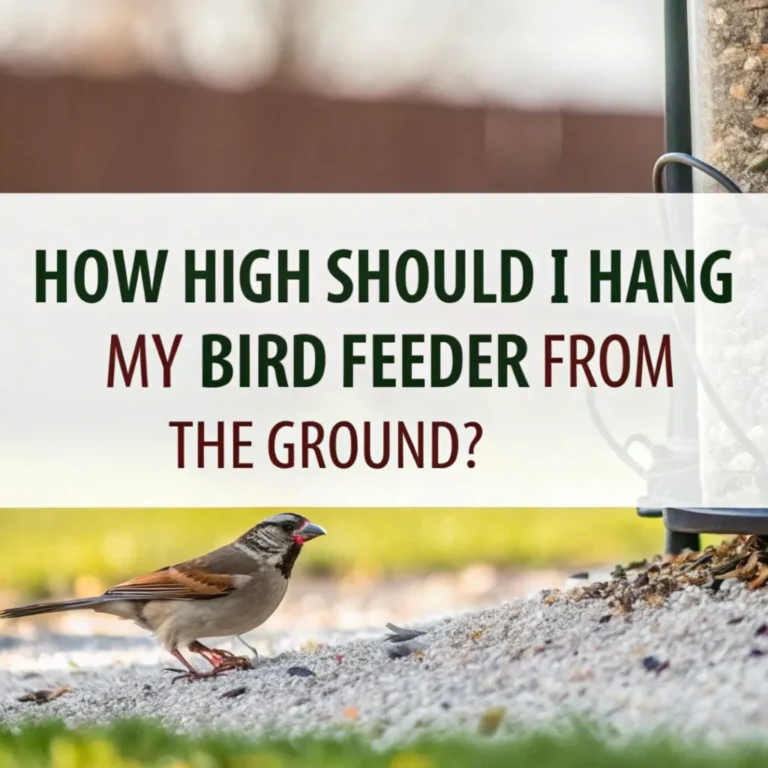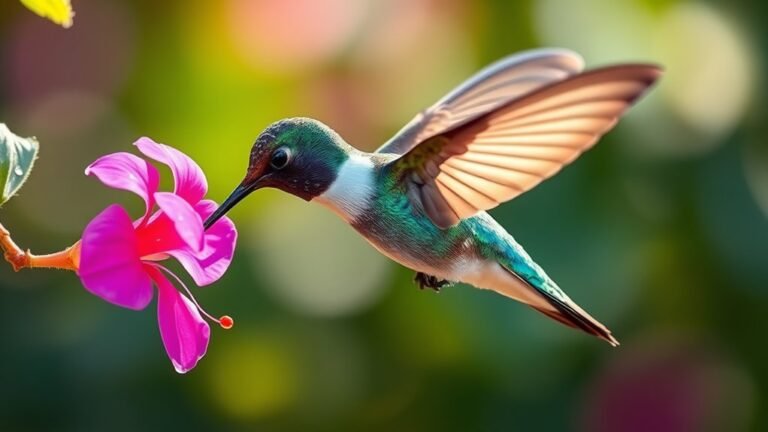Tallest Flying Bird: The Great Albatross
The Great Albatross is the tallest flying bird. Its life involves more than its large wingspan. Watching these birds in the wild provides interesting details about their feeding and social lives. They glide smoothly over the ocean, which helps them save energy. However, they face many problems today, raising important questions about their future and the health of marine environments.
Key Takeaways
The Great Albatross is the largest flying bird, with a wingspan that can reach up to 12 feet. It mainly lives in the Southern Ocean and nests on remote islands to stay safe from predators. This bird mostly eats squid and small fish. It glides smoothly while searching for food.
Great Albatross pairs are monogamous, meaning they mate for life. During the breeding season, they perform elaborate courtship dances to strengthen their bond.
This species faces threats to its survival. Bycatch in fisheries and the destruction of its habitat are significant challenges. Protecting the Great Albatross is essential for preserving its population.
Physical Characteristics of the Great Albatross
The Great Albatross impresses with its large wingspan of up to 12 feet. This size makes it the tallest flying bird.
Its long wings allow it to glide effortlessly over the ocean, using minimal energy. When compared to smaller birds, the albatross's wingspan stands out clearly.
Its feathers are mostly white with dark tips, adding beauty to its flight. The bird's strong body supports its large wings, enhancing its ability to soar.
Observing the Great Albatross helps us appreciate its unique features and the beauty of flight in nature.
Habitat and Distribution
Observing the Great Albatross in its natural habitat offers valuable insights about its distribution and behavior. These birds mostly live in the Southern Ocean, where they fly long distances over open waters.
They prefer remote islands as nesting grounds, providing safety from predators. The Great Albatross covers extensive ocean areas, and each species has its own specific range.
These magnificent birds glide smoothly over the waves, demonstrating their adaptability. Understanding where they live enhances our appreciation for their role in the ecosystem and helps us connect with these incredible creatures.
Feeding Habits and Diet
Great Albatrosses have unique feeding habits that help them thrive at sea. They glide over the ocean to find food efficiently. These birds often follow ships to eat discarded fish and waste.
Their main food choices are squid and small fish, which provide essential nutrients. Watching them dive to catch prey is captivating. Albatrosses also work together to improve their feeding success.
Breeding and Nesting Behavior
Great Albatrosses form strong pairs. These birds mate for life and can stay together for decades. During courtship, they perform dances that include synchronized movements and sounds. This helps them build a strong bond.
They pick nesting sites on remote islands and often return to the same spot each breeding season. These sites have grassy areas or cliffs, which offer some safety from predators.
The female lays one egg. Both parents take turns incubating the egg and feeding the chick after it hatches. This teamwork highlights their commitment to their family.
Watching this nurturing behavior can deepen your appreciation for the lives of Great Albatrosses.
Migration Patterns
After raising their young, Great Albatrosses begin long migration journeys. These journeys show their strong endurance. The timing of these migrations aligns with the changing seasons of the ocean.
They travel great distances, sometimes crossing the equator, to find food. Understanding their migration timing helps ensure they arrive at feeding areas before food runs out.
Their flight paths are shaped by wind and ocean currents, allowing them to glide efficiently. These remarkable birds connect us to nature through their adventures, showcasing their strength and navigation skills.
Watching their journey helps us appreciate their important role in the ecosystem.
Flight Mechanics and Gliding Techniques
The albatross flies gracefully over the ocean. Its long, slender wings provide excellent lift and efficiency.
This wing structure helps the bird adjust its soaring patterns to use wind currents, allowing it to travel great distances with ease.
When gliding, the albatross shifts its wings to find the best angle. It uses thermal updrafts that help it conserve energy.
This skillful flying not only extends its journeys but also highlights its expertise in the air.
The albatross is a symbol of freedom and grace, beautifully connected to the winds above the ocean.
Social Structure and Behavior
Albatrosses glide over the ocean with ease. They use their flight skills and engage in social interactions. These birds form pairs and groups. They communicate through movements and sounds.
During courtship, they perform dance routines and flap their wings. This behavior strengthens their bonds with mates.
Social interactions are key for reproduction and create a sense of belonging in colonies. By engaging in these activities, albatrosses increase group unity, which is important for their survival.
Understanding their social structure shows how connected their lives are and highlights the importance of relationships in nature.
Threats and Conservation Status
The great albatross is known for its large wingspan and elegant flight, but it faces serious threats that impact its survival.
One major threat is bycatch from fisheries, which can accidentally catch these birds. Additionally, human activities destroy their nesting habitats, leading to declining populations.
Conservation efforts aim to protect these vital habitats and encourage sustainable fishing practices. Supporting habitat preservation helps restore important breeding grounds for the albatross.
The Role of Albatross in Marine Ecosystems
The great albatross plays a crucial role in marine ecosystems. It serves as a key indicator of ocean health. These birds forage over large ocean areas, influencing predator-prey relationships.
When they feed on fish and squid, they help control fish populations, affecting the entire marine environment. Their feeding habits also contribute to nutrient cycling. As they consume prey and excrete waste, they increase nutrient availability for phytoplankton, which is essential for the marine food web.
The presence of albatrosses indicates a balanced ecosystem. A decline in their population can signal problems such as overfishing or pollution. Understanding the role of the albatross helps us appreciate its importance in marine life.
These birds are vital for maintaining the health of marine communities that support many forms of life.
Interesting Facts About the Great Albatross
The great albatross is a fascinating bird with unique traits and behaviors. Here are three simple facts that highlight its importance:
- Mating Rituals: Albatrosses perform complex courtship dances. These dances show their dedication to lifelong mates.
- Cultural Significance: Many cultures view the albatross as a symbol of good luck and guidance for sailors, enriching stories of the sea.
- Impressive Wingspan: The wingspan of an albatross can exceed 12 feet. This size helps it glide efficiently and save energy during long flights.
These features demonstrate the great albatross's significance in nature and its connection to human culture, appealing to those who admire its beauty.
Frequently Asked Questions
How Long Do Great Albatrosses Typically Live in the Wild?
Great albatrosses usually live about 50 years in the wild. Their lifespan can be influenced by factors such as habitat, diet, and predators. Compared to other birds, albatrosses show strong survival skills and flexibility in their lives.
Can Great Albatrosses Swim Underwater?
Great albatrosses do not swim underwater like some other birds. They are built for flying and mainly skim the ocean surface. Instead of diving, they float and paddle on the water. This behavior shows how well they adapt to life in the ocean, relying on their ability to move easily on top of the water rather than diving beneath it.
How Much Do Great Albatross Chicks Weigh at Birth?
At birth, great albatross chicks weigh about 150 grams. This small weight shows how quickly they grow. Within just a few weeks, they gain significant size, demonstrating the impressive growth patterns of these unique seabirds. Their growth is fascinating to observe and showcases the strong development that occurs early in their lives.
What Is the Significance of the Great Albatross in Various Cultures?
The great albatross holds significant meaning across different cultures. It often symbolizes love and perseverance. In sailor folklore, people view it as a good omen. Sailors find comfort in its presence, feeling guided as they travel across the sea. The albatross fosters a strong connection to nature and the journey of life.
Are There Any Myths Associated With the Great Albatross?
Albatross myths exist in many cultures. They often stand for good luck or a heavy burden. These birds symbolize life's challenges and connect nature with humanity. Exploring these myths can lead to deeper insights and shared beliefs among people.

Ava is a bird enthusiast and nature lover who has spent countless hours observing and learning about the fascinating world of birds. With a passion for sharing her knowledge and inspiring others to appreciate the beauty of birds, Ava writes about her experiences and insights on avianadmirer.com.







